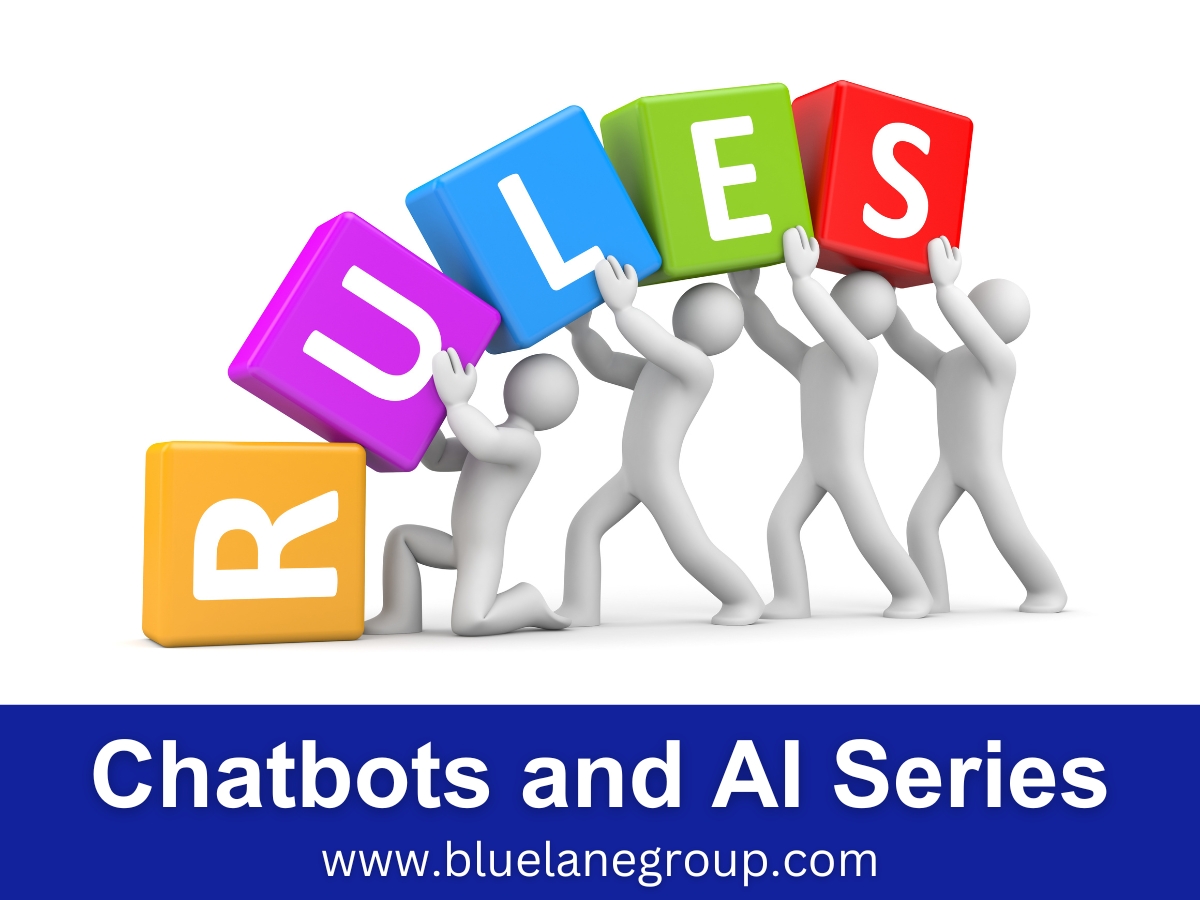This guide examines the world of rule-based chatbots, which stand as a testament to structured, predefined interactions in the digital realm. We’ll unpack their intricacies, highlight their distinctive features, and underscore their continued relevance in a landscape increasingly dominated by AI-driven solutions.
Quick Synopsis – For Those on the Go:
- Rule-based chatbots operate on predefined scripts and decision trees. They respond to user inputs based on explicit rules set during creation, ensuring predictability and consistency. While they might not possess the adaptive learning capabilities of AI chatbots, their strength lies in handling specific tasks with precision and clarity, ensuring users get the exact information they seek.
- Despite the rise of AI-powered chatbots, rule-based variants continue to hold their ground, especially in scenarios requiring straightforward, error-free responses. They offer businesses a reliable way to address customer queries, guide users through processes, and deliver information without the complexities of machine learning or continuous training. Embracing the strengths of rule-based chatbots can significantly enhance user experiences and streamline digital interactions.
Welcome to the ninth Blue Lane Group article in the Best Chatbots for Customer Service: Blueprint for Success in 2023 series. These posts examine the essential chatbot topics of customer service automation, exploring how chatbots revolutionize interactions, enhance user satisfaction, and redefine the benchmarks for excellence in modern customer-centric businesses.

Disclosure: The digital products mentioned in this article are highly regarded in the marketplace and are endorsed by the Blue Lane Group staff. We may earn a commission at no additional cost if you purchase through the provided links.
Table of Contents

Introduction: Unleashing the Power of Rule-Based Chatbots
In today’s digital-driven business landscape, companies constantly search for tools to streamline communication and enhance customer experience. Enter rule-based chatbots, the unsung heroes of the customer service realm.
Unlike their AI-driven counterparts, these chatbots operate on predefined rules, providing predictable and accurate responses every time. Platforms like Botpress and QnA Maker by Microsoft have championed this approach, offering robust tools to build rule-centric chatbot systems.
Elevate Customer Service with Consistent, Instant Responses
In the modern digital era, consumers crave immediate and consistent answers. Rule-based chatbots are strategically designed to meet this demand. Working within predefined parameters ensures every query is met with a standard, accurate response in real-time.
This consistency bolsters customer confidence and guarantees that the information relayed aligns with company standards, reducing the margin for human error.
Why Companies Are Leveraging Rule-Based Solutions
The choice for companies to integrate rule-based chatbots into their customer service arsenal is driven by numerous factors. For starters, these chatbots offer a cost-effective solution for 24/7 customer support. They alleviate the pressure from human agents, allowing them to focus on more complex tasks.
Moreover, with their deterministic nature, rule-based chatbots reduce response variability, ensuring brand consistency. This consistent communication strengthens brand reputation and builds trust among users.

Exploring the Core of Rule-Based Chatbots
Rule-based chatbots operate on a foundational principle: predetermined rules guiding every interaction. Unlike AI-driven chatbots, which learn from past interactions, rule-based chatbots follow a set script or decision tree.
This means they have a clear path for each potential user input, leading to specific responses. Their design is often visual, with platforms like Chatfuel and Flow XO offering intuitive drag-and-drop builders that allow for creating intricate user flowcharts.
What Makes Rule-Based Chatbots Unique?
The distinctiveness of rule-based chatbots lies in their predictability. Each interaction is mapped out in advance, ensuring that they provide consistent answers for specific queries. This contrasts with AI chatbots, which might adapt and change their responses based on machine learning.
Rule-based bots, with platforms like ManyChat, provide reliable outputs regardless of the number of interactions they’ve had, making them particularly useful for businesses that prioritize consistency over adaptability.
Understanding Their Mechanics and Operations
Diving deeper into the operational mechanics of rule-based chatbots offers insights into their unparalleled reliability. These chatbots function straightforwardly: A specific response is triggered if a particular condition or rule is met.
Platforms like Flow XO and ManyChat offer intuitive interfaces where businesses can design and visualize these rules through decision trees or flowcharts.
Unlike AI chatbots that require vast datasets and continuous training, rule-based bots, with the support of tools from MobileMonkey and SnatchBot, can be set up rapidly, ensuring they’re functional in a relatively short span.

Unpacking the Top 9 Benefits of Rule-Based Chatbots
Rule-based chatbots, often powered by platforms like QnA Maker by Microsoft and Botpress, present a myriad of advantages for businesses:
- Consistency: They provide uniform responses, establishing brand consistency.
- Quick Setup: With Tars and similar platforms, businesses can deploy them swiftly.
- Cost-Effective: Reduced need for continuous training means lower operational costs.
- Reliability: Their deterministic nature ensures dependable outcomes.
- Scalability: Can handle multiple queries simultaneously without compromising quality.
- Customizability: Tailor them according to specific business requirements with platforms like Chatfuel.
- Reduced Errors: With predetermined rules, the scope of errors diminishes.
- Easy Maintenance: Platforms like SnatchBot make periodic updates seamless.
- Integration: Easily integrated into various digital platforms, enhancing overall user experience.
Delivering Predictable and Efficient Service
One of the standout attributes of rule-based chatbots is their unwavering predictability when a user poses a query, a guaranteed, predefined response awaits them, a feature championed by platforms like MobileMonkey and Flow XO.
This results in efficient service delivery, devoid of the uncertainties that might come with AI-driven solutions. Moreover, with platforms like ManyChat, businesses can map out comprehensive user journeys, ensuring that each interaction point is addressed methodically. Such predictability enhances user satisfaction and fortifies the brand’s credibility.
How Businesses Amplify Efficiency and Consistency
In today’s fast-paced digital realm, businesses continually seek solutions to optimize operations and deliver unparalleled customer experiences. Rule-based chatbots, supported by platforms like Chatfuel and Botpress, provide this edge.
Companies can eliminate long wait times and ensure every customer feels heard by providing immediate and consistent responses to customer queries. Platforms like SnatchBot and ZoConvert offer customizable templates, allowing businesses to craft unique customer journeys, leading to fewer drop-offs and improved satisfaction rates.
Additionally, by utilizing MobileMonkey’s rich toolset, companies can automate repetitive tasks, freeing human resources for more complex and nuanced engagements.

Comparative Analysis: Rule-Based vs. AI Chatbots
The landscape of chatbot technology is vast, but two prominent players emerge: rule-based and AI chatbots. Rule-based chatbots, often crafted with Flow XO and ManyChat tools, thrive on pre-established rules, ensuring consistency.
In contrast, AI chatbots, which are dynamic and adapt over time, might offer more nuanced responses based on their learning. While rule-based solutions are more predictable, AI-driven ones can be more flexible, especially in handling varied user queries.
However, platforms like QnA Maker by Microsoft bridge this gap, offering rule-based Q&A bots with a hint of adaptability. Cost-wise, rule-based bots often have more predictable budgets, with fewer resources dedicated to continuous training.
Dissecting Features, Costs, and Implementation Complexity
When delving into the intricacies of chatbots, three factors demand attention: features, costs, and the complexity of implementation. Rule-based chatbots, supported by platforms like Tars and ZoConvert, offer structured flows and sequences.
They are often less expensive in the long run due to limited maintenance and training needs. While providing dynamic responses, AI chatbots can be resource-intensive, necessitating vast data sets and regular updates.
Regarding implementation, rule-based bots, especially with platforms like SnatchBot and Botpress, are relatively straightforward, with businesses able to visualize and easily design flows. In contrast, AI solutions might require specialized expertise, especially during the initial stages.
Tailoring Chatbot Selection to Business Needs
Choosing the right chatbot solution hinges on a business’s unique requirements and constraints. Rule-based chatbots are optimal for companies prioritizing consistent interactions and swift deployments, as offered by platforms like Chatfuel and Flow XO.
These bots, underpinned by predetermined rules, guarantee consistency. On the other hand, businesses seeking more dynamic and adaptable solutions might veer towards AI-driven chatbots. However, weighing the complexities and costs associated with each is essential.
Tools like MobileMonkey and ManyChat allow businesses to harness the power of rule-based chatbots while also integrating elements of adaptability, ensuring they don’t compromise on flexibility.

In-depth Look at Rule-Based Chatbot Functionality
Rule-based chatbots are a fascinating blend of simplicity and precision. Platforms like Botpress and Chatfuel have integrated functionalities enabling these bots to operate based on predetermined rules. For instance, the bot has a specific, scripted response when a user asks about store hours.
But it’s not just about scripted interactions. Using platforms like Flow XO, businesses can create intricate rule-based workflows that can handle multi-step processes, like guiding a user through an entire purchase cycle, ensuring every touchpoint is well-orchestrated and delivers consistent value.
How These Chatbots Are Designed and Operated
Designing a rule-based chatbot involves mapping out every potential interaction point and scripting appropriate responses. Tools like ManyChat and MobileMonkey provide intuitive interfaces where businesses can visualize and build out these interaction trees. Once designed, the chatbot matches user input to these predefined rules.
Unlike AI chatbots, which require machine learning algorithms and continuous data feeding, rule-based bots, supported by platforms like SnatchBot, remain consistent in their operation, delivering the same output for the same input, ensuring predictability in user experiences.
Overcoming Constraints and Enhancing Performance
While rule-based chatbots offer numerous advantages, they come with constraints. Their primary limitation is the inability to handle queries outside their predefined rules. However, with platforms like Tars and ZoConvert, businesses can incorporate feedback loops and iterative improvements.
Over time, as user queries evolve, the chatbot can be refined and expanded, incorporating more scenarios and broadening its scope. Businesses can continuously enhance their chatbot’s efficiency and coverage by integrating analytics tools and regular performance reviews.

Spotlight on Affiliate Products: Rule-Based Excellence
The digital market is brimming with platforms dedicated to optimizing rule-based chatbot experiences. Botpress stands out as an open-source giant, allowing businesses to tailor their bots extensively. Chatfuel simplifies bot building through its structured block system, making it user-friendly for beginners.
Flow XO champions rule-based workflows, supporting businesses in crafting intricate user journeys with triggers and actions. ManyChat and ZoConvert shine on social media, specifically targeting Facebook Messenger with rule-based prowess.
Meanwhile, MobileMonkey melds marketing brilliance with rule-based functionality, and QnA Maker by Microsoft offers a unique twist by focusing on Q&A bots. With platforms like these at their disposal, businesses can harness the power of rule-based chatbots to their fullest potential.
Botpress: The Open-Source Rule-Based Champion
Delving into the world of chatbot creation, Botpress stands out as a beacon for those who value customization and control. As an open-source platform, it grants developers and businesses unparalleled access to its underlying code.
This level of transparency and adjustability means that users can craft bots perfectly aligned with their unique needs. Rule-based bots designed with Botpress can encompass many scenarios, from simple customer service inquiries to more intricate workflows.
The platform’s rule-based flow-building capabilities ensure that interactions are consistent, reliable, and tailored to deliver optimal user experiences.
Chatfuel: Simplified Bot Building with Structured Flows
For those venturing into chatbot creation without a deep tech background, Chatfuel is a godsend. This platform simplifies the intricacies of bot building by leveraging a block structure. Users can easily visualize and construct their bot’s conversational flows, ensuring each interaction is logical and consistent.
The rule-based nature of Chatfuel means that businesses can anticipate the bot’s responses, giving them greater control over customer interactions. Its user-friendly interface and powerful rule-based engine make Chatfuel an ideal choice for novices and seasoned bot creators.
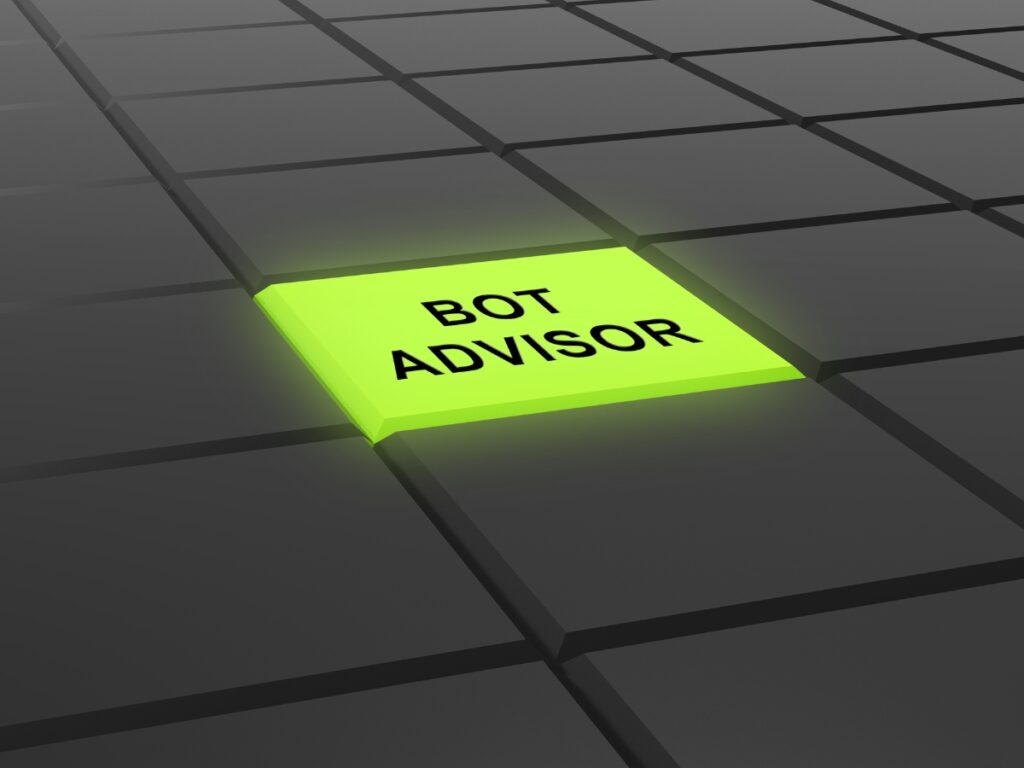
Flow XO: Crafting Efficient Workflows with Ease
Rule-based chatbots are all about structuring interactions, and Flow XO has mastered this art. This platform is tailored specifically for creating rule-based workflows, offering businesses various triggers and actions.
Whether guiding a user through a purchase, addressing FAQs, or collecting feedback, Flow XO’s platform provides the tools to map out every step. Its intuitive interface ensures businesses can design and deploy efficient bots that enhance customer experiences and drive operational efficiency regardless of their technical know-how.
ManyChat: Rule-Based Mastery for Facebook Messenger
With the prominence of social media in today’s digital landscape, platforms like ManyChat have carved a niche for themselves. Designed expressly for Facebook Messenger, ManyChat enables businesses to craft rule-based chatbots that seamlessly integrate with the social platform.
The emphasis here is creating user flows that engage, inform, and guide Facebook users. From promotional campaigns to customer support, ManyChat’s rule-based engine ensures that interactions on Messenger are consistent, timely, and relevant, fortifying a brand’s presence on the social giant.

MobileMonkey: Rule-Based Marketing Bot Excellence
For businesses with a marketing-centric focus, MobileMonkey emerges as a formidable player in the chatbot arena. Built to drive marketing outcomes, this platform features impressive tools for crafting rule-based bots.
Whether lead generation, customer segmentation, or engagement campaigns, MobileMonkey’s structure ensures that interactions remain on-brand and consistent. By harnessing its rule-based functionalities, businesses can confidently deploy bots that address queries and propel marketing objectives, balancing user satisfaction and strategic goals.
QnA Maker by Microsoft: Q&A Bots Made Easy
QnA Maker by Microsoft has revolutionized how businesses approach the age-old challenge of addressing FAQs. As a cloud-based API service, it offers a streamlined approach to creating rule-based Q&A bots.
Its intuitive platform lets users easily input potential questions and define precise answers, ensuring they always receive consistent and accurate information. Given Microsoft’s legacy of robust tech solutions, QnA Maker is a testament to their commitment to simplifying complex processes, making the creation of rule-based bots straightforward and efficient.

SnatchBot: Diverse Scenarios, One Rule-Based Solution
In the expansive realm of chatbot platforms, SnatchBot holds its own with its emphasis on versatility. Known for its user-friendly design interface, businesses can craft rule-based chatbot flows suitable for a myriad of scenarios, from essential customer support to intricate e-commerce transactions.
Its adaptability ensures that regardless of the industry or use case, SnatchBot delivers consistency and reliability. By leveraging its rule-based design capabilities, businesses can ensure their bots address user needs while maintaining a uniform conversational tone, irrespective of the complexity of the query.
Tars: Conversational Forms with Rule-Based Precision
When it comes to transforming traditional online forms into engaging conversations, Tars leads the way. With its innovative approach to creating conversational forms, Tars allows businesses to capture user information more interactively and engagingly.
Using its rule-based chatbot builder, companies can design causal pathways that guide users through processes, ensuring every interaction feels personal and intuitive. This transition from static forms to dynamic conversations enhances user experience and boosts completion rates, making Tars an invaluable tool for businesses looking to optimize their data collection processes.
ZoConvert: Auto-Response Sequences for Messenger
For businesses keen on harnessing the potential of Facebook Messenger, ZoConvert offers a specialized solution. This platform stands out, emphasizing rule-based auto-response sequences tailored for Messenger.
ZoConvert empowers businesses to design bots that promptly engage with users, delivering timely and consistent responses. By setting up rule-defined arrangements, companies can ensure that every interaction on Messenger follows a structured pathway, leading to enhanced user satisfaction and increased engagement rates, especially in an era where instant communication is paramount.

Practical Implementations: Rule-Based Chatbots in Action
The theoretical understanding of rule-based chatbots is just the beginning; their practical implementation underscores their value. Across industries, these chatbots have been integrated into business operations, enhancing both backend processes and front-facing customer interactions.
Whether automating order updates in e-commerce, guiding users through troubleshooting processes in tech support, or handling reservation queries in hospitality, rule-based chatbots have proven their mettle in streamlining operations and driving efficiency.
Enhancing Business Processes and Customer Interaction
The integration of rule-based chatbots goes beyond just answering queries; they play a pivotal role in refining overall business processes. By providing instant and consistent responses, these bots reduce the need for manual intervention, allowing human resources to focus on more complex tasks.
Furthermore, from a customer interaction standpoint, they offer a seamless experience. Whether navigating product catalogs, seeking information about services, or addressing concerns, rule-based chatbots ensure that users receive prompt and precise answers, fostering a sense of trust and reliability.
Real-World Success Stories and Applications
The real testament to the efficacy of rule-based chatbots lies in their real-world applications. Take, for instance, the e-commerce sector, where such bots assist users in tracking orders or addressing return queries. In the healthcare domain, they help patients schedule appointments or provide general health information.
In finance, these chatbots assist users in navigating the myriad of services, from checking account balances to making transfers. Each of these instances highlights rule-based chatbots’ versatility and ability to drive tangible outcomes regarding operational efficiency, customer satisfaction, or revenue generation.
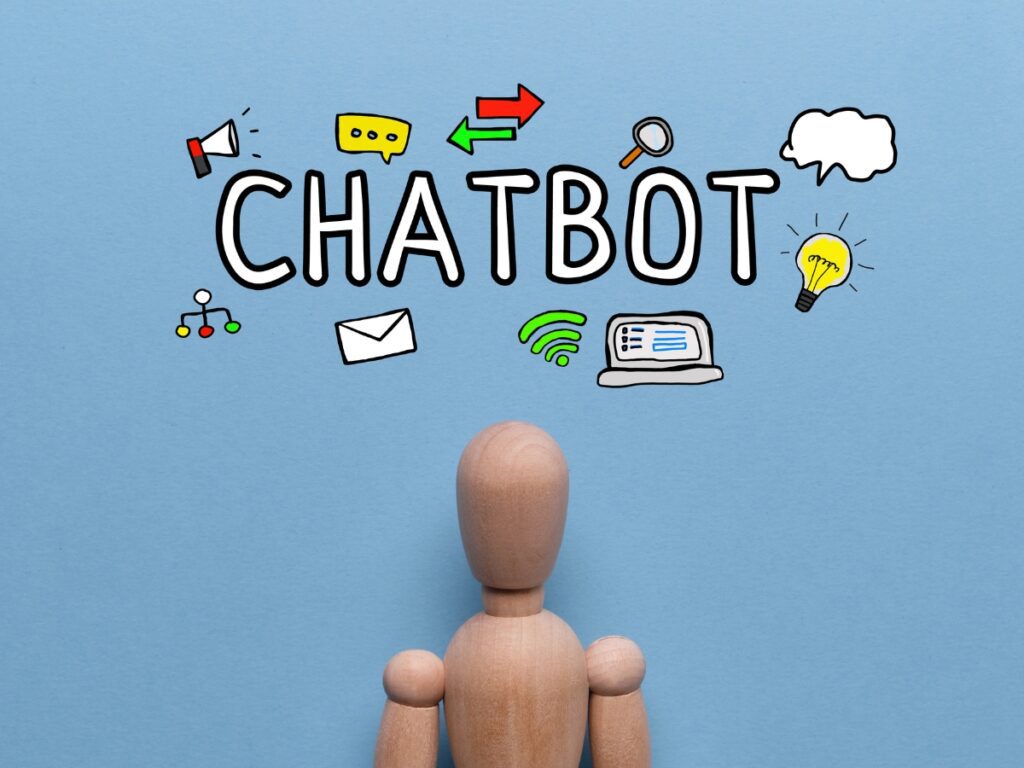
Challenges and Limitations: A Comprehensive Overview
While rule-based chatbots offer numerous advantages, it’s essential to be aware of their inherent challenges and limitations. Given their structured nature, they primarily operate within the confines of predefined rules. As such, they might not always effectively handle unanticipated queries or those that veer off-script.
This rigidity can sometimes frustrate users who seek more dynamic or nuanced responses, particularly when compared to AI-driven bots that rely on machine learning and natural language processing.
Navigating Complex Queries and Scalability Issues
One of the most prominent challenges facing rule-based chatbots is managing complex or multi-layered queries. Unlike their AI counterparts, these chatbots can’t infer intent from context or handle questions that haven’t been explicitly programmed.
This limitation becomes even more pronounced as businesses scale, with an increasing number of diverse user inquiries. Additionally, as a company grows and its offerings evolve, maintaining and updating the rules for the chatbot can become an intricate and time-consuming task, posing scalability issues.
Strategies for Overcoming Common Rule-Based Hurdles
Despite these challenges, there are several strategies businesses can employ to maximize the potential of rule-based chatbots. First, regularly updating the rule set based on user feedback can ensure the chatbot remains relevant and responsive.
Incorporating a feedback loop where users can rate the helpfulness of responses or redirect to human operators for complex queries can enhance overall user satisfaction. Additionally, integrating rule-based chatbots with AI components for specific tasks can provide a balanced approach, leveraging the best of both worlds to offer a more comprehensive solution.
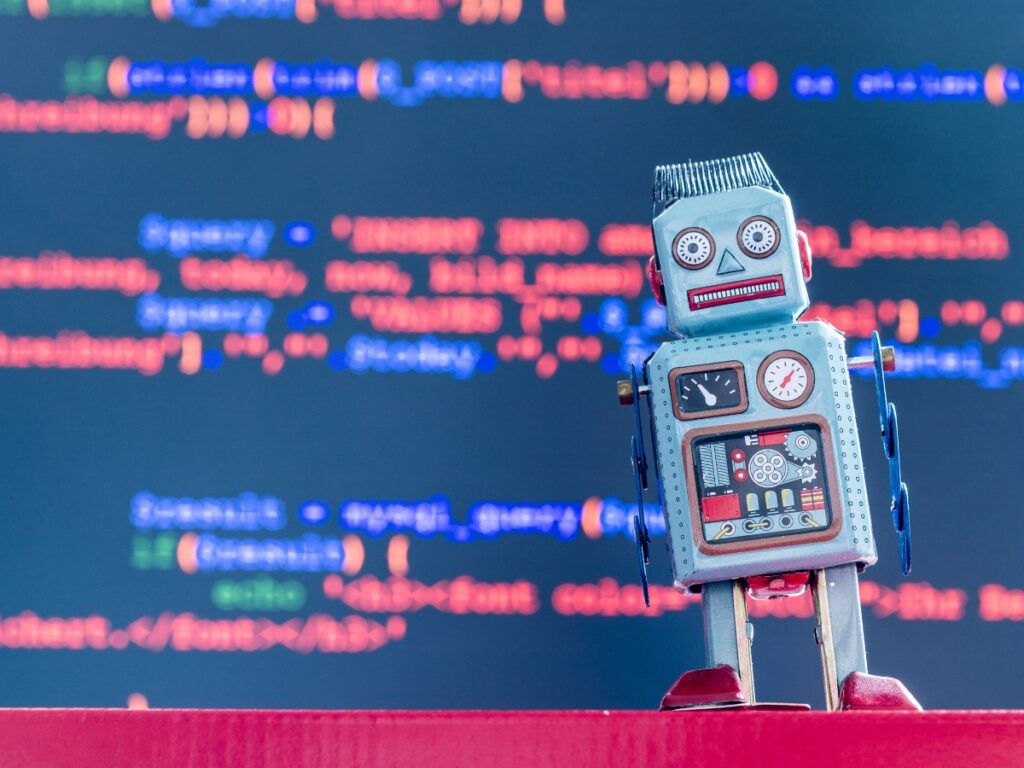
Step-by-Step Guide to Rule-Based Chatbot Creation
Creating an effective rule-based chatbot requires meticulous planning and execution. Begin by identifying the primary goals and objectives for the chatbot, such as customer support, sales assistance, or general information dissemination. Next, map out the user journey, pinpointing potential touch exchange interactions.
With the framework in place, define explicit rules for each interaction, ensuring responses are clear and concise. Tools like Chatfuel or Flow XO can assist in designing structured flows with ease. Once the chatbot is live, continuously monitor its performance, gather user feedback, and iterate to ensure it remains an effective and efficient tool for the business and its clientele.
From Goal Setting to Deployment: A Comprehensive Walkthrough
Launching a rule-based chatbot is not a task to be taken lightly. It begins with clearly defining what you want the bot to achieve. Are you looking to solve customer queries, guide users through a sales funnel, or provide instant information?
Once the goals are set, the design phase ensues. This involves charting all possible user interactions, from greetings to potential queries. Tools like ManyChat and Botpress offer intuitive platforms to help structure these interactions. After the design comes the testing phase; before full deployment, ensure the chatbot interacts seamlessly across different platforms and can handle a range of user inputs.
After thorough testing, the chatbot is ready to be deployed and serve its users.
Tips for Designing, Training, and Integrating Your Bot
- User-Centric Design: Always prioritize the user’s needs. The design should be intuitive, with a logical flow.
- Keep it Simple: Especially when starting, it’s better to have a bot that does one thing well than a bot that does many things poorly.
- Regular Training: Even though rule-based chatbots don’t “learn” like AI bots, they need regular updates based on user interactions and feedback.
- Integration: If you use platforms like MobileMonkey or SnatchBot, ensure they integrate well with your existing systems for a seamless experience.

FAQs: Addressing Queries on Rule-Based Chatbots
Rule-based chatbots, given their operational distinctiveness, often lead to many questions. Here, we address some of the most common queries:
- What is the primary difference between rule-based and AI chatbots? – Rule-based chatbots operate based on predefined rules, offering set responses to specific inputs. AI chatbots leverage machine learning to respond, allowing them to handle a broader range of queries.
- Can rule-based chatbots handle any query? – No, they can only respond to queries they have rules for. The chatbot may not answer satisfactorily if a user’s question veers off-script.
- Is it expensive to set up a rule-based chatbot? – Costs can vary. Platforms like Chatfuel provide cost-effective solutions for businesses on a budget.
Unraveling Common Questions and Misconceptions
There’s a prevailing misconception that rule-based chatbots are inherently inferior to AI-driven ones. While AI chatbots offer advanced functionalities, rule-based chatbots shine in their predictability and consistency.
Another common myth is that these chatbots can’t be updated or evolve. On the contrary, with platforms like ZoConvert and Tars, businesses can easily update and refine their chatbots’ rule sets to better cater to users’ needs. Understanding these nuances is pivotal for companies to make informed decisions and effectively leverage the power of rule-based chatbots.
Offering Clarity and Guidance for Prospective Users
For those considering integrating rule-based chatbots into their operations, clarity is paramount. Prospective users should understand that while rule-based chatbots excel in delivering consistent and predictable responses, they operate within a bounded set of predefined rules.
This means their scope, while incredibly reliable, is limited to the rules you establish. Platforms like Botpress and MobileMonkey offer guidance and best practices to help users navigate this terrain, ensuring that the chatbot setup is as comprehensive as possible to meet user expectations.
Before committing to a chatbot solution, businesses should identify their primary needs, customer support, sales, or general inquiries, and choose a platform that aligns with those needs.

Projecting Future Trends and Developments
The landscape of chatbot technology is rapidly evolving. As AI and machine learning continue to make headlines, rule-based chatbots are also undergoing transformative changes. Shortly, we might see hybrids – bots that combine the consistency of rule-based systems with the adaptability of AI.
Moreover, as businesses recognize the value of instant, consistent customer interactions, there will likely be a surge in the adoption of rule-based chatbot platforms like Flow XO and SnatchBot. Furthermore, advancements in natural language processing could allow these chatbots to interpret user queries more effectively, blurring the lines between rule-based and AI-driven responses.
Preparing for an Era of Enhanced Consistency and Efficiency
The future of business-customer interactions is geared towards immediacy and precision. Rule-based chatbots stand at the forefront of this shift, promising consistent and error-free interactions. As businesses lean into automation, the demand for efficiency will only intensify.
This makes it imperative for companies to understand the mechanics of rule-based chatbots and stay abreast of advancements in the field. Platforms like Chatfuel and Tars consistently refine their offerings, ushering in a new age where rule-based chatbot interactions are not just a luxury but a standard expectation.
Embracing this shift now will position businesses favorably in an increasingly competitive digital landscape.
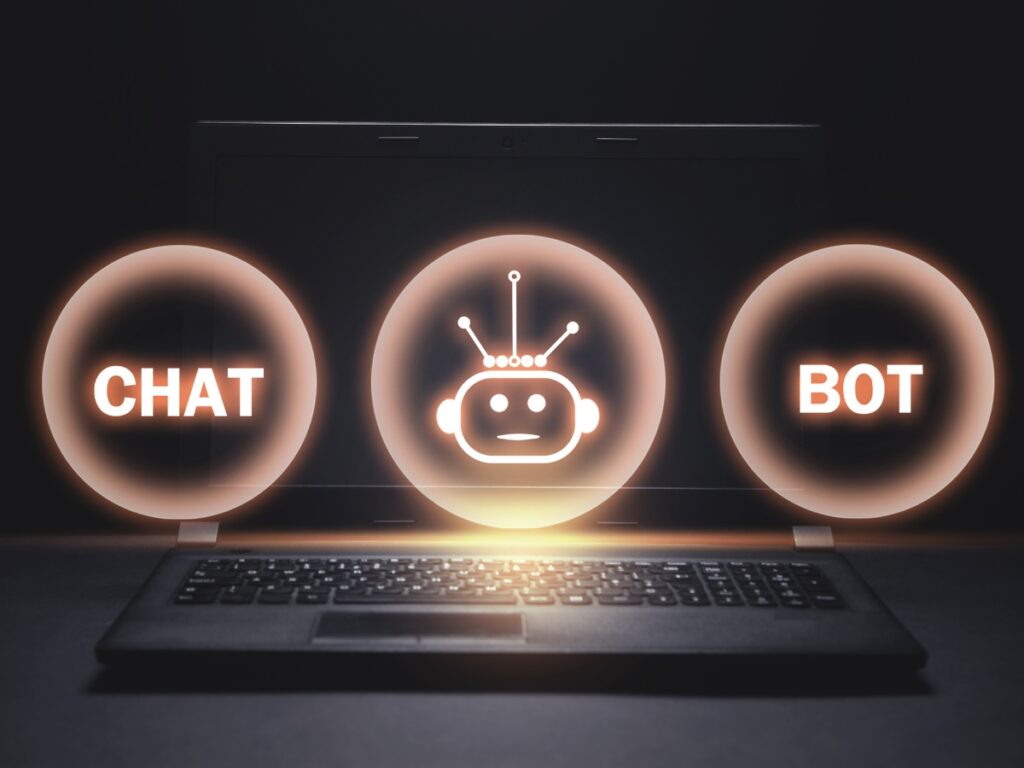
Conclusion: The Evolutionary Journey of Rule-Based Chatbots
Digital communication has witnessed remarkable transformations over the past few decades. From rudimentary automated responses to the sophisticated conversational agents we see today, the trajectory has been nothing short of impressive. Central to this evolutionary tale is the rise and refining of rule-based chatbots.
With their structured flows and deterministic nature, rule-based chatbots have carved out a unique space in customer interactions. Their commitment to delivering consistent, instant, and error-free responses has made them indispensable for large and small businesses across various sectors. Their beauty lies in their simplicity: they operate within clearly defined parameters, ensuring users receive consistent answers to their queries every time.
However, as with all technology, rule-based chatbots are not static. They’ve evolved in response to user needs, technological advancements, and changing business landscapes. Their designs have become more intricate, their rules more comprehensive, and their interactions more user-friendly. While they might lack their AI counterparts’ spontaneity and learning capabilities, their reliability and efficiency make them a worthy contender in the chatbot arena.
Looking ahead, the future seems promising for rule-based chatbots. As businesses increasingly prioritize instant and accurate customer interactions, the role of these chatbots is set to become even more pivotal. Moreover, the potential for integrating rule-based logic with emerging technologies could give rise to hybrid systems that combine the best of both worlds. Such advancements would further solidify the position of rule-based chatbots in the digital communication ecosystem.
In summary, the journey of rule-based chatbots is a testament to the potential of technology to evolve and adapt. Their continued relevance in today’s fast-paced digital age underscores their intrinsic value and the promise they hold for the future. As we move forward, one thing is sure: rule-based chatbots will continue to shape and redefine the contours of business-customer interactions in profound ways.

You Might Also Like
If you enjoyed this article and received value from it, check out the other Blue Lane Group articles in the Best Chatbots for Customer Service: Blueprint for Success in 2023 series:
- Chatbot ROI: Unlock Unmatched Profits with Top 5 Strategies for Optimization
- Omnichannel Chatbots: Unlock Consistent Engagement with 7 Best Practices
- Chatbot KPIs: 10 Essential Metrics to Drive Optimal Results
- Multilingual Chatbots: Break Language Barriers with 8 Leading Solutions
- Enterprise AI Chatbot Solutions: 7 Key Tools to Supercharge Your Business
- Mastering Chatbot Training: 7 Strategies for Optimal User Engagement
- Chatbot APIs: 6 Leading Options for Seamless Functionality
- Chatbot Scripts: 9 Proven Strategies to Boost Conversions and Engagement
- Rule-Based Chatbots: Drive Consistent Responses with Top 9 Benefits
- Chatbot Success Metrics: Unlock Optimal Performance with Top 10 Insights
- Chatbot Analytics: Drive Excellence with 10 Essential Tools
- Mastering Interactivity: Top 10 Chatbot Frameworks Explored
- Chatbots in Retail: 7 Winning Strategies for Elevated Customer Engagement
- Chatbots for Lead Generation: 6 Best Practices to Transform Your Funnel
- Chatbot Integrations: 6 Essentials for Enhanced Productivity and Operations
- Chatbot UX: Enhance Engagement with These 8 Vital Principles
- Chatbot Security: 7 Essentials to Safeguard Your Business
- Chatbot Development Services: 7 Must-Knows to Boost Your ROI
- Chatbots in Healthcare: 6 Leading Innovations Revolutionizing Patient Care
- NLP for Chatbots: Top 6 Techniques Transforming Chat Experiences
- Benefits of Chatbots in Customer Service: 7 Key Sales Boosters
- 7 Essential Social Media Chatbots for Unmatched Engagement
- Building Chatbots Powered by AI: 5 Proven Techniques for Epic Profits


